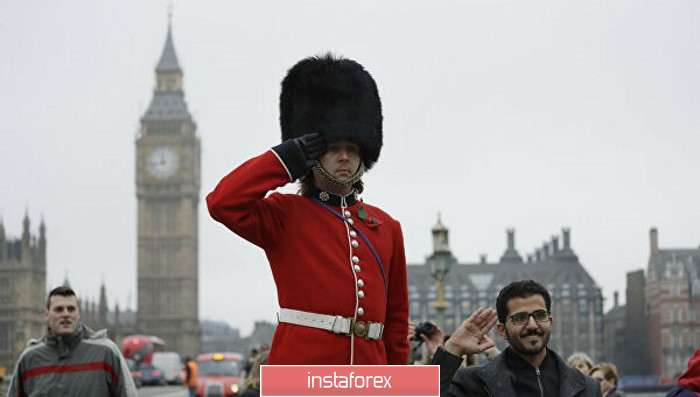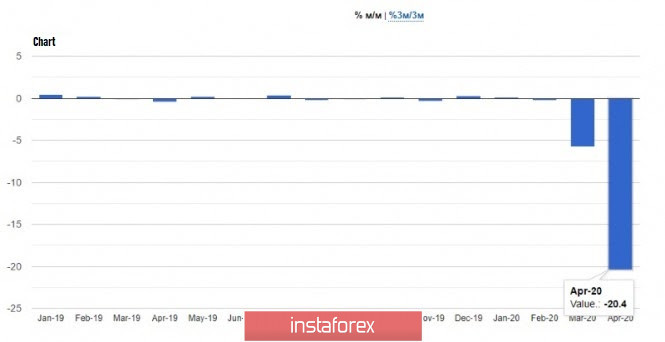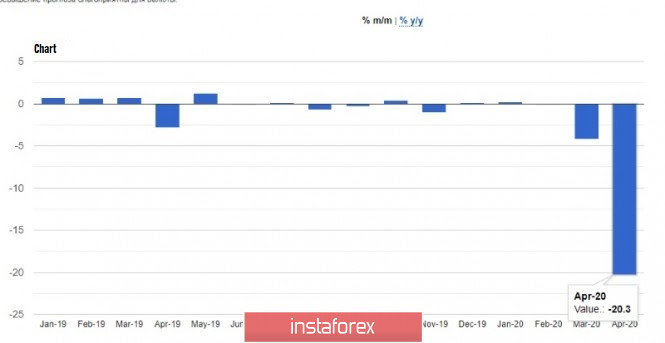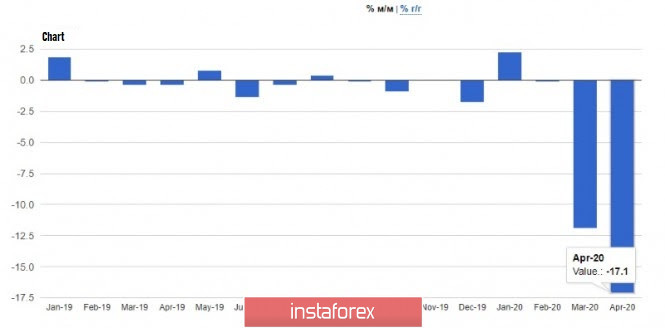The excitement in buying the British pound is coming to an end. The recent data on the UK economy opened the eyes of investors who blindly believed in the quick recovery of the UK against the pandemic and economic crises. According to the minimum calculations of economists, the UK needs at least 3 years before the country can recover up to its pre-crisis levels.

The GDP data published last Friday fully demonstrated the effects of the quarantine restrictions in the economy. According to the report, the UK economy contracted by more than 20% in April this year, due to the restrictions introduced to overcome the pandemic. The national statistics agency also reported that, compared with April 2019, GDP fell by 24.5%.
A report also revealed that industrial production fell by 20.3% in April, largely due to a sharp drop in the manufacturing industry, where the figure fell immediately by 25% due to the suspension of enterprises. The service sector also suffered severely and fell by 19%.

Since the activity indicators for May have not yet been observed, it is quite difficult to count on a strong and rapid recovery of the economy. In addition, it was only in mid-June that various sectors of the economy began to open in the UK, as they were suspended due to restrictions on social distance. Such factors strengthen the idea that the UK GDP will show a more pronounced recovery in the 3rd quarter of 2020, but as mentioned above, it is unlikely to return to its pre-crisis volume by 2023. Moreover, if a second wave of the pandemic occurs, quarantine measures will be re-introduced, which will increase further the time needed to return to normal functioning of the economy.

Meanwhile, trade relations between the UK and EU still has not yet been settled. A disordered exit from the common market may still occur, so in the second half of this month, British Prime Minister Boris Johnson is expected to hold talks on this topic with EU leaders. In this regard, if a concession still was not reached, it is likely that after a small surge in economic growth in the 3rd quarter of 2020, the country will return to recession at the beginning of 2021.
Thus, a video conference is to be held today between British Prime Minister Boris Johnson and the European Commission President Ursula von der Leyen to discuss on possible terms of a trade agreement, but a compromise is unlikely to be reached on a number of key issues. An example of this is the disagreement of British cabinet of ministers in the extension of the Brexit transition period, which will end on December 31.
As for the technical picture of the GBP / USD pair, the movement of quotes in the support level of 1.2455 will depend on the development of the trade negotiations between the UK and the EU. A breakout from the level will quickly push the trading instrument to the lows of 1.2370 and 1.2290, while the growth of the pound will be halted by the resistance area of 1.2630, or the larger resistance in the area of 1.2750.
EUR / USD
The data published last Friday revealed that industrial production fell slightly in April this year, lower than what economists had expected. According to the report, industrial production in the eurozone fell by 17.1% in April, and is most likely the lowest figure it can drop, after which a recovery can be expected to begin after the coronavirus pandemic has receded. Since the quarantine restrictions were already lifted in May and June of this year, industrial production could now begin to recover. However, a quick V-shaped leap should not be expected, since the risk of a second pandemic wave is still quite high and social distance measures will remain at a fairly high level. In addition, domestic demand is still at a rather low level.

The US dollar continues its rise against risky assets immediately after the release of Americans' assessment of the state of the US economy in early June this year. According to the data, the outlook of Americans have improved significantly, largely due to the resumption of work of a number of enterprises, as well as on the restoration of the labor market. In addition, the University of Michigan reports that the consumer sentiment index for two weeks in June rose to 78.9 points from 72.3 points in May this year. Economists expected the index to only reach 75.0 points. The current conditions index also rose to 87.8, and the expectations index increased to 73.1.
In another note, the speech of Fed spokesman Tom Barkin at the end of the week did not affect the markets much. Basically, Barkin said the same as his colleagues, claiming that the crisis hurt low-wage workers the most, and not all jobs will be restored after the crisis. Therefore, it is the low-income Americans who need help. Barkin also drew attention to the fact that it is only in the absence of the second wave of the virus will it be possible to talk about the economy moving along the correct and positive trajectory, but it will not be possible to quickly return to the pre -crisis state, since the consequences of the growth of public debt and the reduction of GDP can not be ignored.
As for the technical picture of the EUR / USD pair, a bearish mood will remain in the euro, but the bears will need to take control of the support level of 1.1190, as only a breakout from which will develop a new trend in the trading instrument, which will lead to the update of lows in the region of 1.1110 and 1.1040. If the bulls manage to lead the situation, a correction to the resistance area 1.1320 will occur, a breakout from which will return the quotes to last week's high in the area of 1.1400.





















